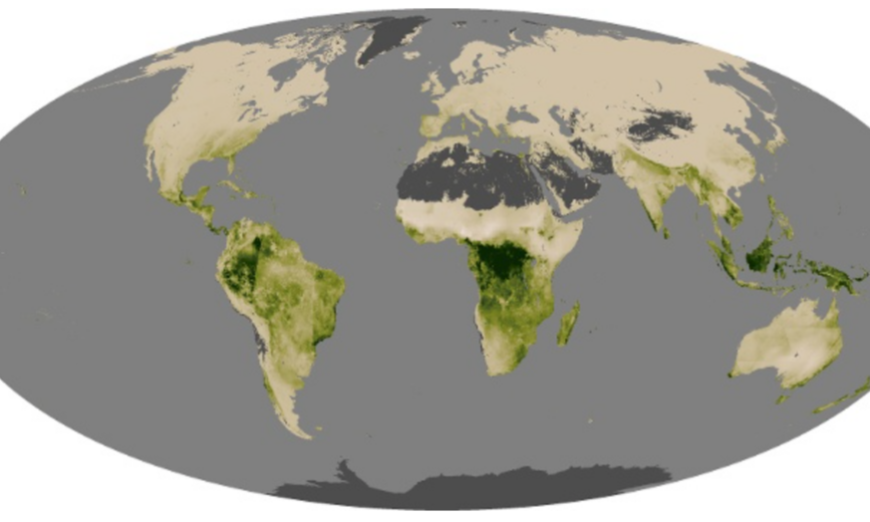Map of February, 2000.
These maps show the ‘metabolism” of Earth’s plants and trees. Net primary productivity is the difference between the amount of carbon dioxide absorbed during photosynthesis minus the amount released by respiration .
Plants capture and store solar energy through photosynthesis. During photosynthesis, living plants convert carbon dioxide in the air into sugar molecules they use for food. In the process of making their own food, plants also provide the oxygen we need to breathe.
Thus, plants provide the energy and air required by most life forms on Earth. Plant productivity also plays a major role in the global carbon cycle by absorbing some of the carbon dioxide released when people burn coal, oil, and other fossil fuels. The carbon plants absorb becomes part of leaves, roots, stalks or tree trunks, and ultimately, the soil.
The maps above show one way to monitor the carbon “metabolism” of Earth’s vegetation.
They show net primary productivity, which is how much carbon dioxide vegetation takes in during photosynthesis minus how much carbon dioxide the plants release during respiration (metabolizing sugars and starches for energy). The data come from the Moderate Resolution Imaging Spectroradiometer (MODIS) on NASA’s Terra satellite. Values range from near 0 grams of carbon per square meter per day (tan) to 6.5 grams per square meter per day (dark green). A negative value means decomposition or respiration overpowered carbon absorption; more carbon was released to the atmosphere than the plants took in.
In mid-latitudes, productivity is obviously tied to seasonal change, with productivity peaking in each hemisphere’s summer. The boreal forests of Canada and Russia experience high productivity in June and July and then a slow decline through fall and winter. Year-round, tropical forests in South America, Africa, Southeast Asia, and Indonesia have high productivity, not surprising with the abundant sunlight, warmth, and rainfall. However, even the tropics, there are variations in productivity over the course of the year.
For example, in the Amazon, productivity is especially high from roughly August through October, which is the area’s dry season. Because the trees have access to a plentiful supply of ground water that builds up in the rainy season, they actually grow better when the rainy skies clear and allow more sunlight to reach the forest.


Because carbon dioxide gas helps to warm our world, scientists want to better understand where carbon dioxide comes from and where it goes. Plants play an important role in the movements of carbon dioxide throughout Earth’s environment. Living plants both take in carbon dioxide from the air and put out carbon dioxide to the air. So scientists use satellites to measure the difference between how much carbon dioxide is taken in by plants compared to how much is put out by them. This difference is total amount of carbon dioxide taken in by plants, called net primary productivity. The maps here show plants’ net primary productivity for the whole globe.
Source, NASA.

